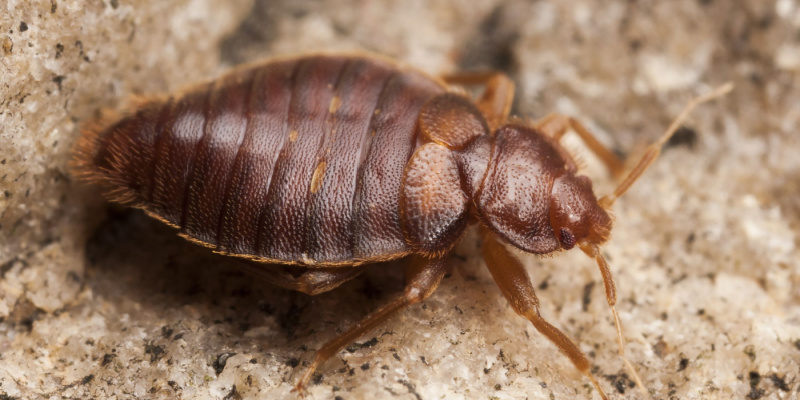Trusted DC Exterminator for Bed Bug Heat Treatment Near Me
Trusted DC Exterminator for Bed Bug Heat Treatment Near Me
Blog Article
Exploring the Scientific Research Behind Bed Bug Warmth Treatments as a Sustainable Bug Monitoring Technique
In the world of pest administration, the pursuit for sustainable and efficient services stays a consistent pursuit. One such technique that has actually obtained traction in the last few years is using warmth therapies to combat bed bug invasions. By harnessing the science behind thermal death points for these consistent bugs, heat treatments use an encouraging alternative to traditional chemical-based methods. The ins and outs of just how warmth properly removes bed pests and the broader implications for sustainable pest management practices make this a topic worth exploring further.
Bed Pest Warm Treatment Process

Thermal Fatality Factor for Bed Insects
Revealing bed insects to raised temperatures beyond their thermal resistance array is essential for accomplishing reliable eradication in warm therapy procedures. By getting to and maintaining temperatures above the thermal death point for bed insects, parasite management experts can make sure thorough removal of bed pest populations, including hard-to-reach areas where chemical treatments may be less effective. Comprehending the thermal death point for bed insects is necessary for applying effective heat treatment strategies and achieving sustainable insect administration results.
Benefits of Warm Treatments
Having actually developed the vital thermal fatality factor for bed insects, it is important to now check out the considerable benefits that warm treatments provide in properly eliminating these resistant bugs. When compared to typical chemical approaches, warm treatments existing a number of essential benefits. Among the main advantages is that heat can pass through deep right into gaps and cracks where bed pests conceal, guaranteeing that even one of the most hard-to-reach areas are warmed to dangerous temperatures. This comprehensive strategy not just kills real-time insects but additionally targets bed bug eggs, stopping future invasions.
In addition, heat treatments are ecologically pleasant and safe, making them a lasting pest administration approach. Unlike chemical pesticides, heat treatments do not leave dangerous deposits that can pose risks to human health and wellness or the setting. This facet is this contact form particularly essential in sensitive atmospheres such as health centers, schools, and suburbs where chemical usage might not be preferable.
Furthermore, warm therapies have a high success price in removing bed pest problems in a solitary therapy, reducing the need for multiple check outs and lessening interruption to passengers. This effectiveness not just conserves money and time yet additionally provides assurance to those dealing with bed bug troubles.
Performance of Heat Treatment

Warmth therapies have the added advantage of killing bed bug eggs, which are often immune to typical chemical therapies. In general, the effectiveness of warmth therapies in eliminating bed insect infestations makes them a lasting and trustworthy insect management approach.
Lasting Pest Monitoring Perks
Carrying out sustainable insect monitoring practices provides lasting advantages for both the environment and public health and wellness. By utilizing methods such as warm therapies for insect control, we can lower the reliance on dangerous chemical pesticides that can have adverse impacts on ecosystems and human health - bed bug treatment. Lasting pest management methods assist in maintaining biodiversity by targeting details insects without hurting non-target microorganisms, consequently keeping a balanced ecosystem
Additionally, sustainable pest management practices contribute to the overall health and wellness of the general public. By minimizing exposure to harmful chemicals utilized in conventional insect control methods, warmth therapies give a more secure option for insect management in domestic, business, and public rooms. This reduction in chemical usage additionally aids in stopping pesticide residues from infecting soil, water, and air, protecting ecological high quality.
Conclusion
Finally, bed insect warmth therapies have been revealed to be a sustainable and reliable bug management approach. The thermal death factor for bed bugs makes them at risk to warm therapies, which have various benefits over conventional chemical therapies. The effectiveness of warm therapies in getting rid of bed pest infestations while decreasing environmental effect highlights the possibility of this technique as a lasting solution for bug control.
The bed pest heat treatment procedure involves increasing see post the temperature level within infested areas to a level that effectively eliminates bed insects and their eggs. By getting to and maintaining temperatures above the thermal fatality factor for bed bugs, insect administration specialists redirected here can ensure detailed removal of bed pest populaces, including hard-to-reach areas where chemical treatments may be less efficient. One of the key benefits is that warmth can penetrate deep into gaps and fractures where bed pests conceal, ensuring that even the most hard-to-reach areas are heated to lethal temperatures. Unlike chemical treatments that may leave behind resistant populations, heat therapies offer a eco friendly and safe remedy that can pass through deep right into furnishings, wall surfaces, and various other hard-to-reach areas where bed bugs hide.
The thermal death factor for bed pests makes them at risk to warmth therapies, which have many advantages over conventional chemical treatments.
Report this page